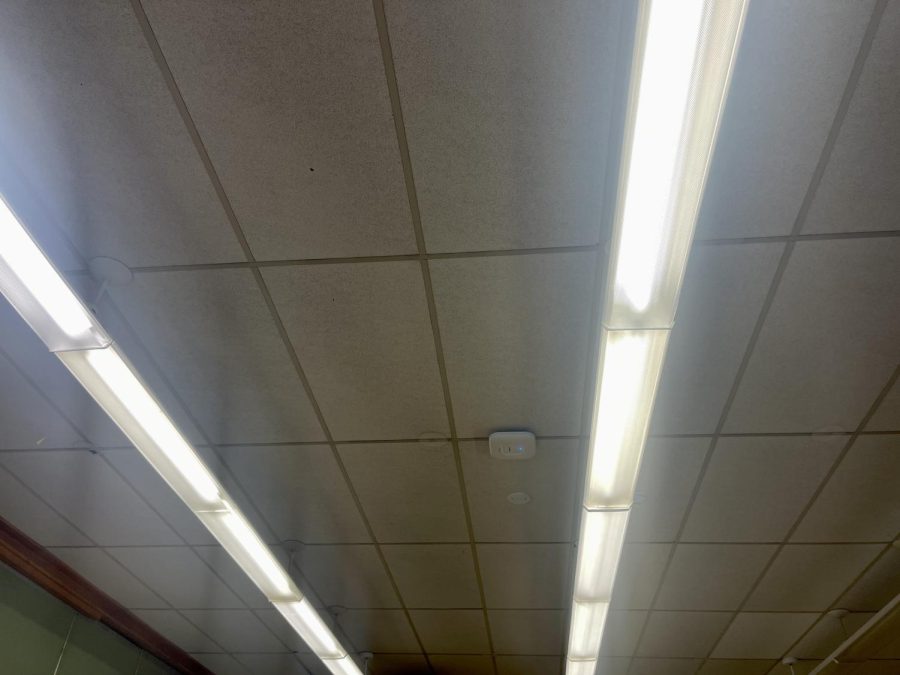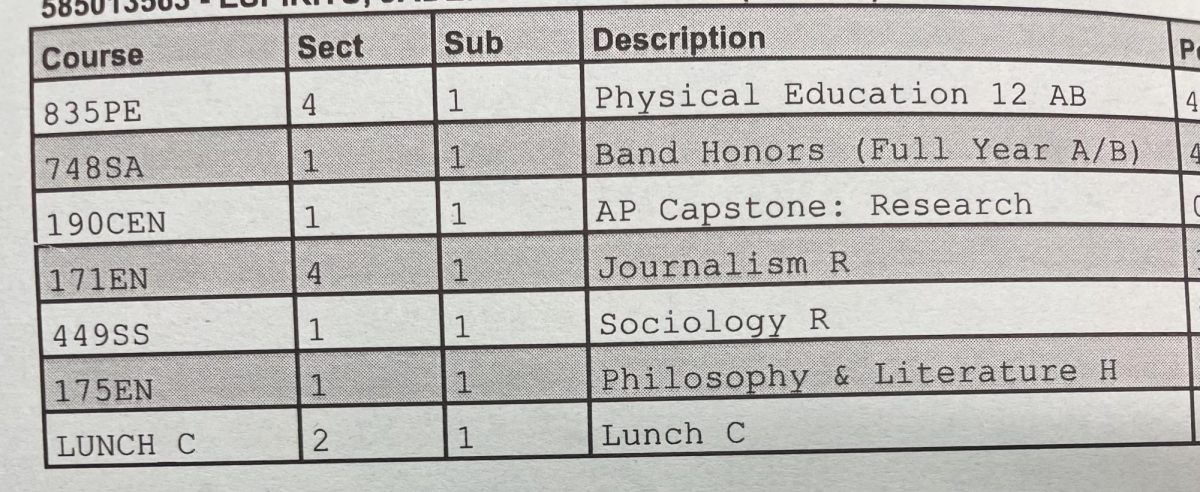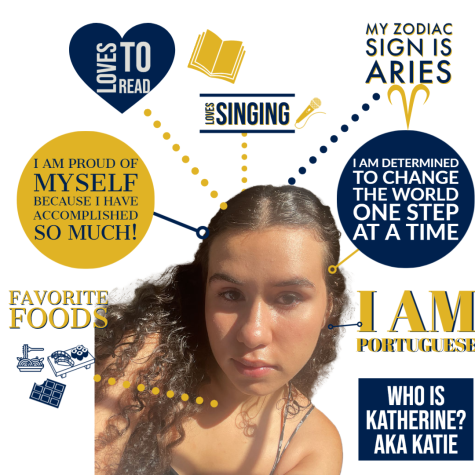One of the most common features in any classroom is the fluorescent lights hanging from the ceiling. Being in the classroom for about eight hours a day, it’s important to use lighting that will best benefit students. However, fluorescent lights are doing more harm than good for students.
How fluorescent lights work
Inside the tube, a chemical reaction occurs between gasses and mercury vapor. This produces invisible UV light. There is a phosphor powder coating inside the tube, which the UV light illuminates. White fluorescent light is due to this.
Due to the fact that these lights are dependent on a gas chemical reaction, this can cause every light to vary in color, as well as rapid colored flickers.
Health effects of fluorescent lighting
Fluorescent lighting can have serious effects on students’ health and performance ability. The Journal of Human Factors and Ergonomics Society published a study that shows the flickering that comes from fluorescent lights can affect the way our eyes move across texts. It can interfere with the performance of visual tasks. It has also been shown to induce headaches and eye strain.
Furthermore, fluorescent lights can irritate the nervous system, causing lower performance accuracy and poor concentration. The flicker coming from fluorescent lights is extremely harmful to those who suffer from migraines and epilepsy as they are more sensitive to light. The flickering causes more attention and behavioral problems are in children.
If there are even the tiniest cracks present in the glass of the lights, this can lead to an exposure of unsafe levels of UV light. Exposure to these UV lights over long periods of time can lead to vision problems such as cataracts and macular degeneration.
How fluorescent lighting affects students
Ashley Massano, a senior at Colonia High School, has noticed the physical effects of being exposed to fluorescent lighting in school. She states, “In classrooms, the lighting is so bright that my eyes get strained.”
She attributes her lack of motivation to the lighting in school, “I can tell that I feel tired and unmotivated in school and I’ve recently noticed that the lighting typically contributes to that.
Massano has experienced a large amount of eye strain because of the lighting, “ Sometimes I sit in my classroom and I think to myself how my eyes feel so strained. I already have to look at a screen all day and now have to deal with the silly lighting on top of it. While I may seem dramatic, I can’t help but wonder how a change in lighting could help alleviate this problem.”
My Experience
As a student, I have also experienced a lot of fatigue and eye strain while being in school. By the time I get to my last class, my eyes feel extremely tired and it’s difficult to concentrate due to this. At first, I thought it was just because I was tired, but I realized this wasn’t the case. The second I left school and went outside, my eyes felt fine and the fatigue faded away. With the combination of looking at my computer screen all day to the lighting, my eyes really feel fatigued and strained. It makes it difficult to concentrate.
Possible solutions to fluorescent lighting
The use of fluorescent lights in school is understandable. These lights are low-cost yet highly efficient, making them the easiest and simplest lighting to use in schools. However, when students’ health is being affected, it’s crucial to try and solve the problem.
One option is upgrading to newer LED light bulbs and tube lights. LED lights can provide lighting that isn’t so harsh, and can also be dimmed accordingly. These lights also last for much longer and use less energy than fluorescent lights do. Most importantly, LED lights do not have UV rays.
Studies have also shown that LED lights in schools can improve students’ test scores and concentration. A study done in an elementary school in Hamburg, Germany showed that when using SchoolVision lighting systems (composed of LED lights), students responded positively. Reading speeds increased by 35 percent, hyperactivity was reduced by 76 percent, and errors were reduced by 45 percent.
It’s clear to see that by switching to LED lights, students will be provided with a more sustainable and productive learning experience. It’s crazy how something that seems so insignificant plays such an important role in learning.













wendy johnson • Jun 14, 2022 at 10:09 pm
Artificial lighting does have negative impacts on an unknown number of people. Illumination may induce distortions in text, trigger migraines, reduce the time spent reading. Congratulations on raising this issue. Some scholars are raising the issue, but voices of complaint need to be louder.
Theo • Jun 3, 2022 at 1:20 pm
I think this article is helpful because some types of light are harmful this will help me beware of what types of light to buy.